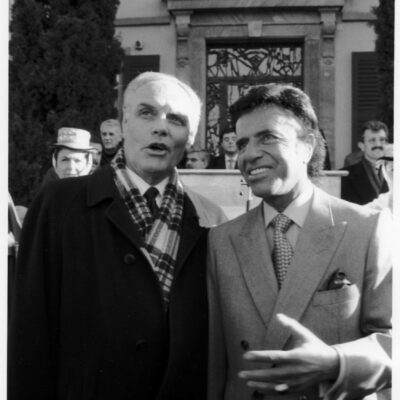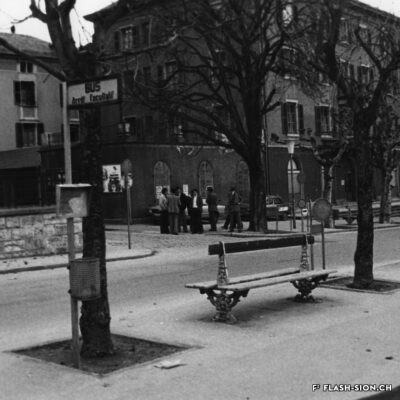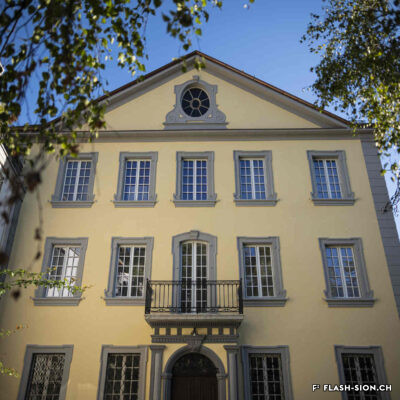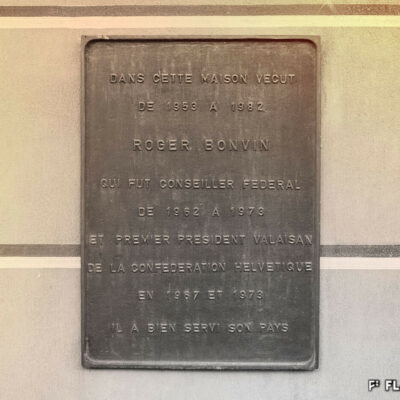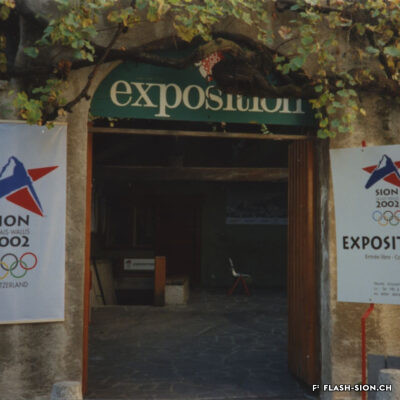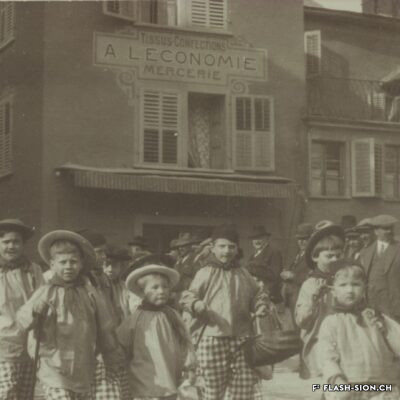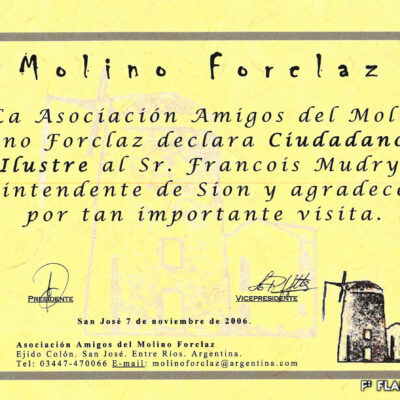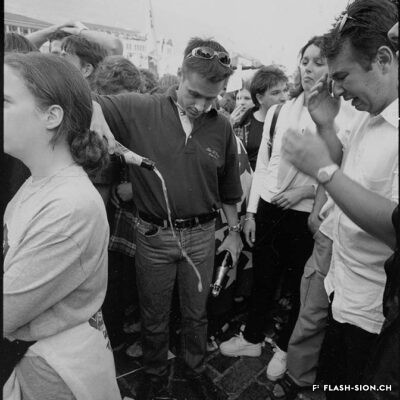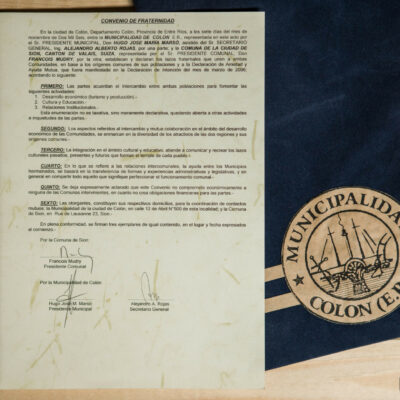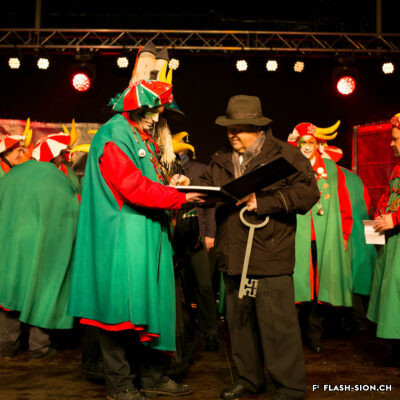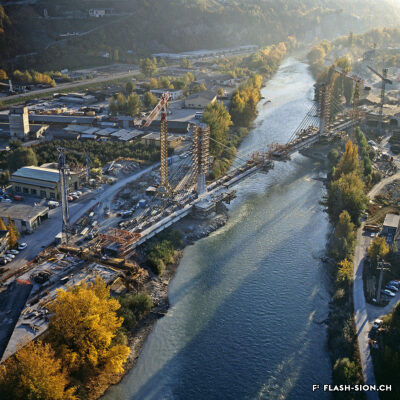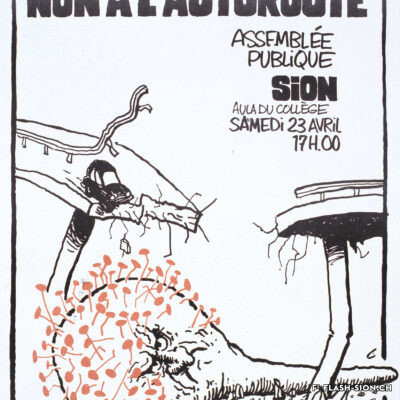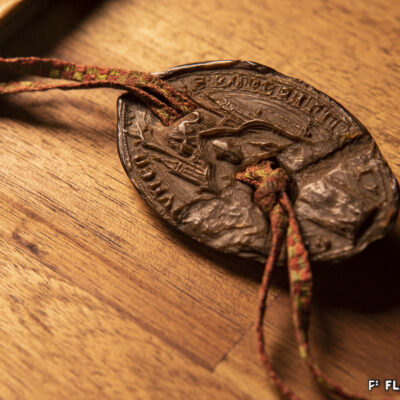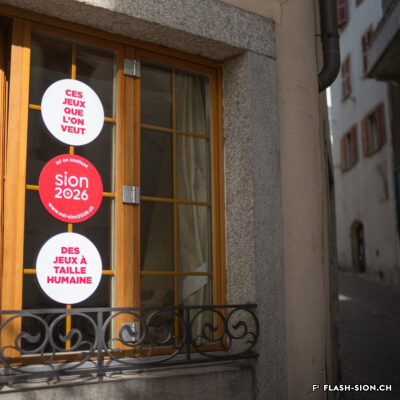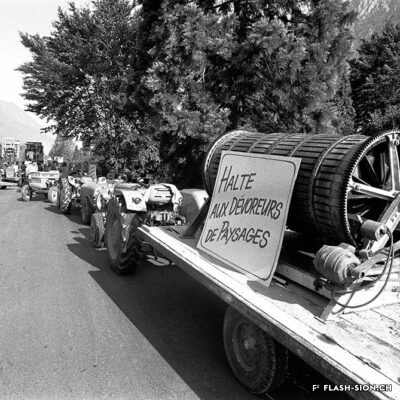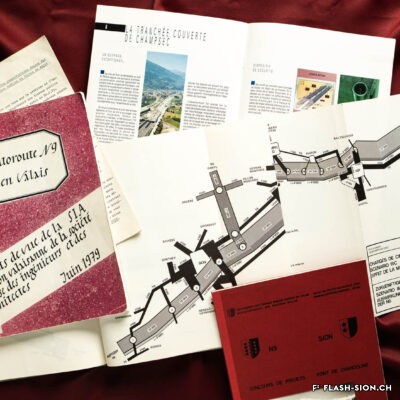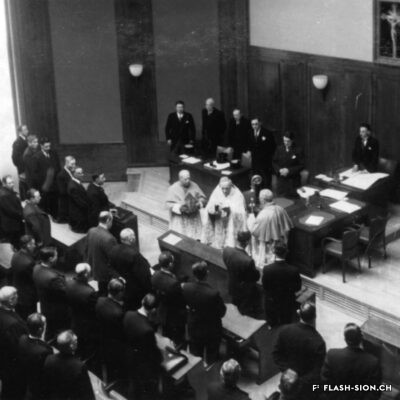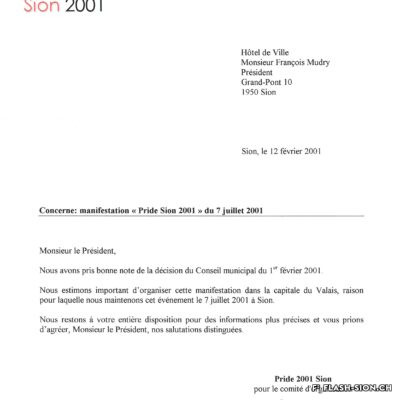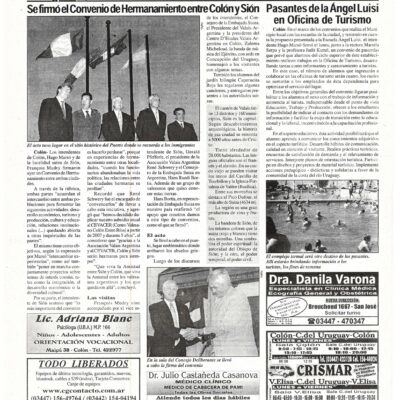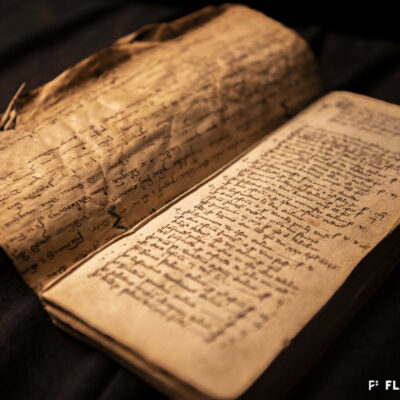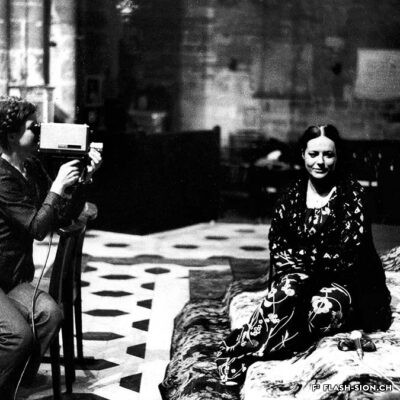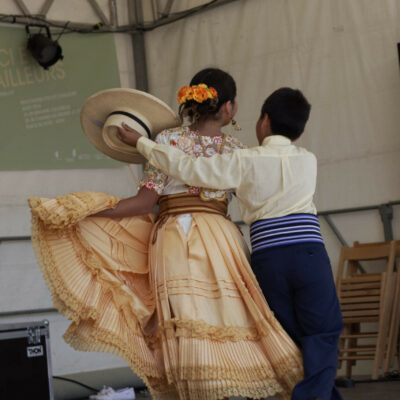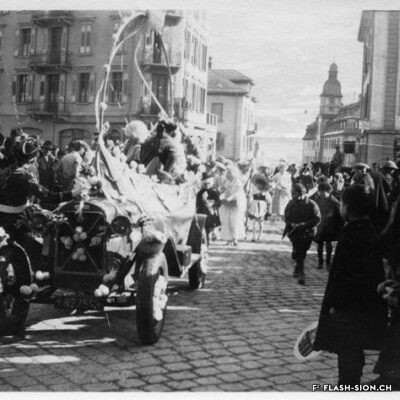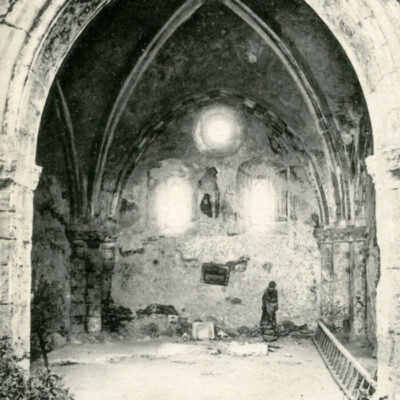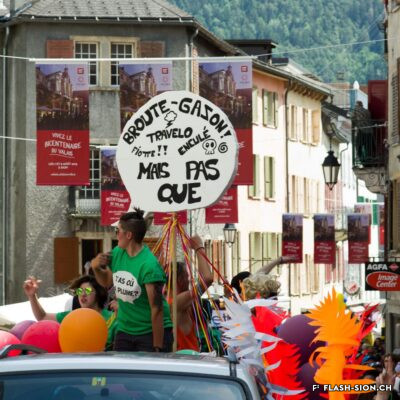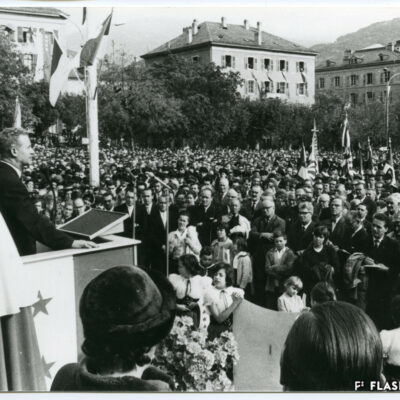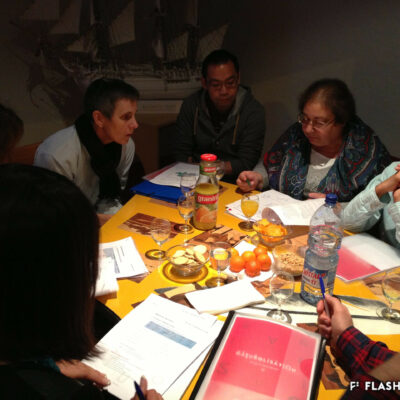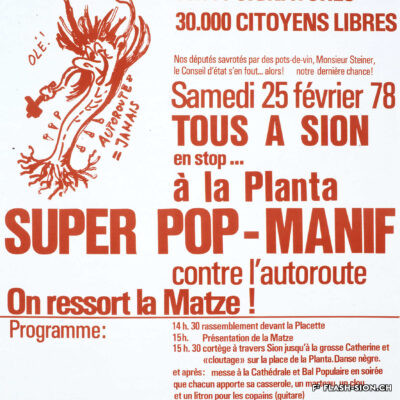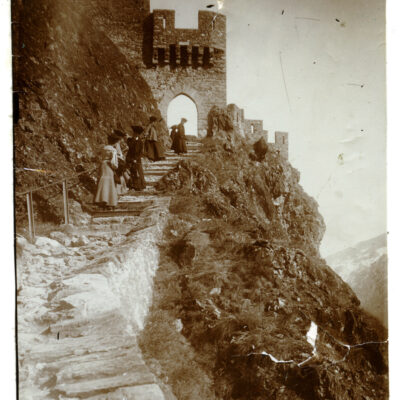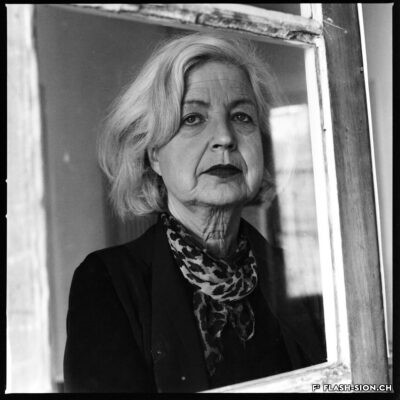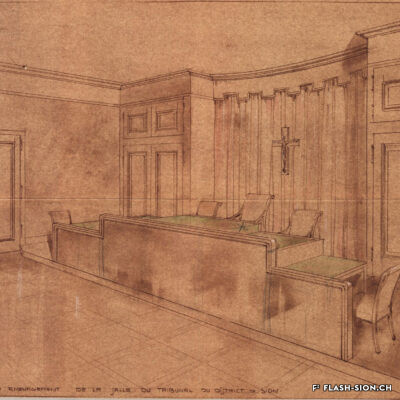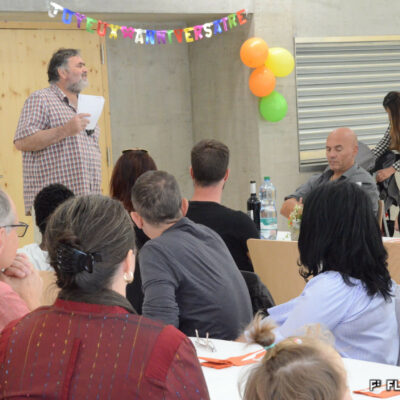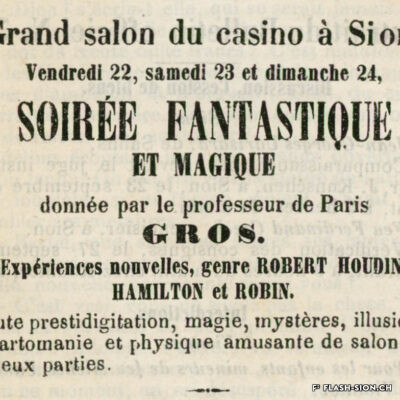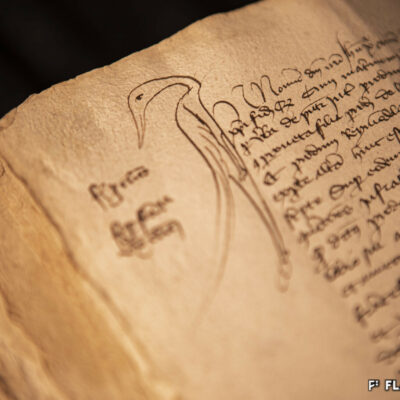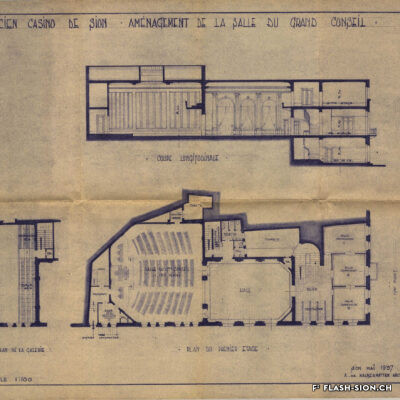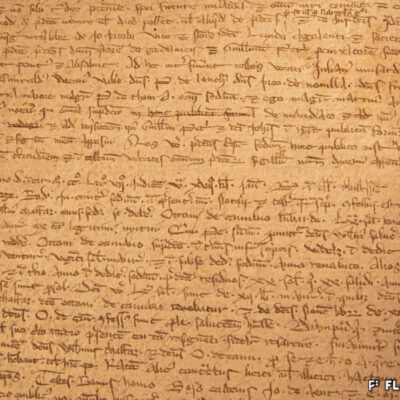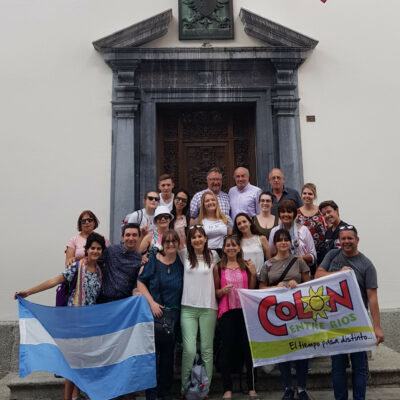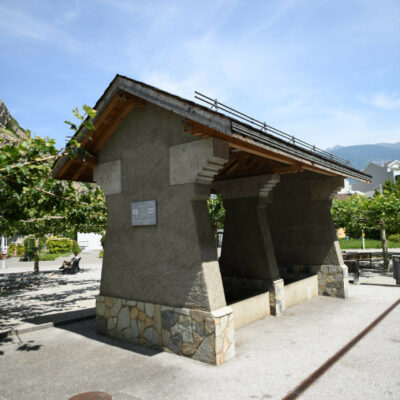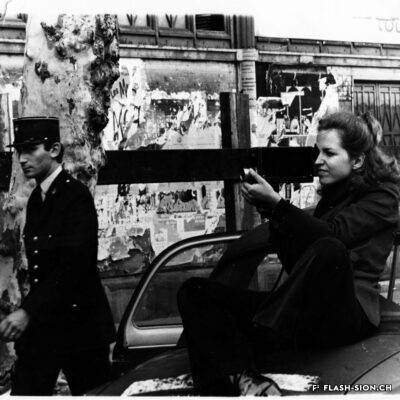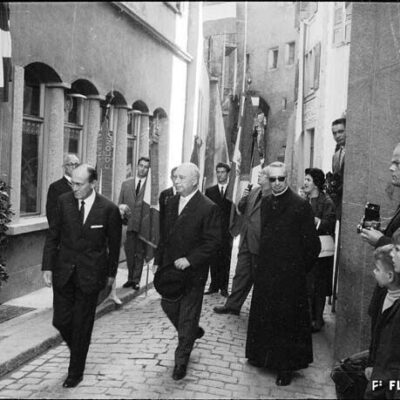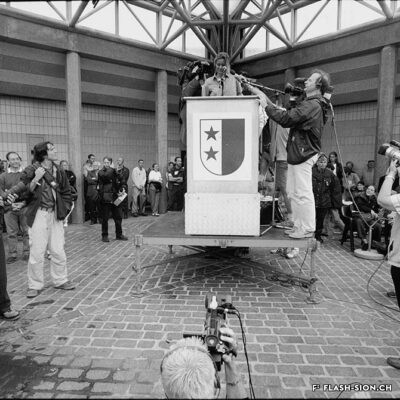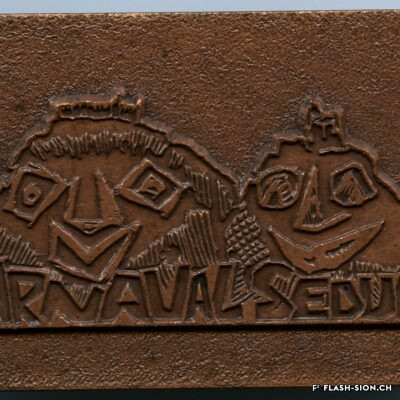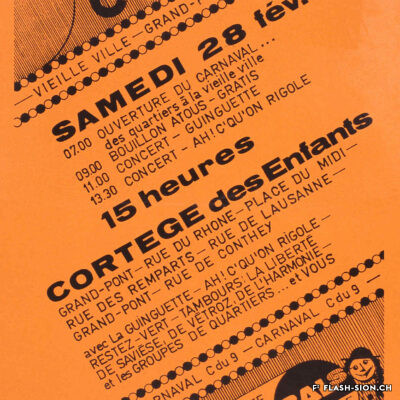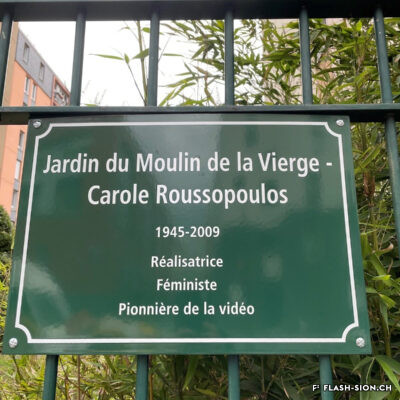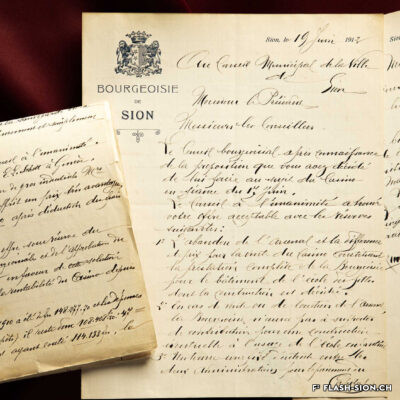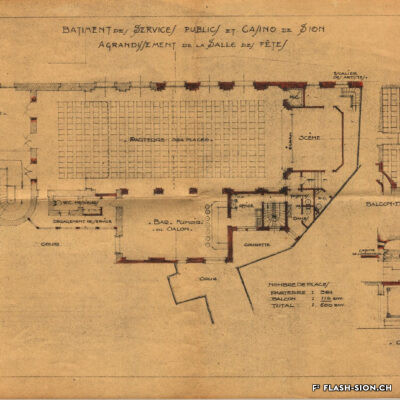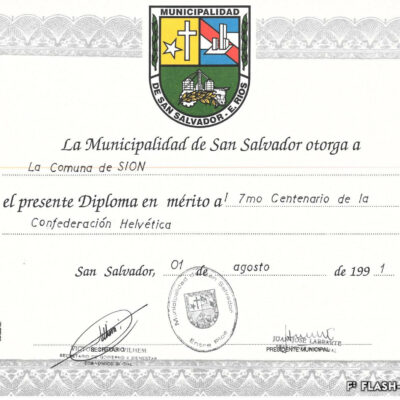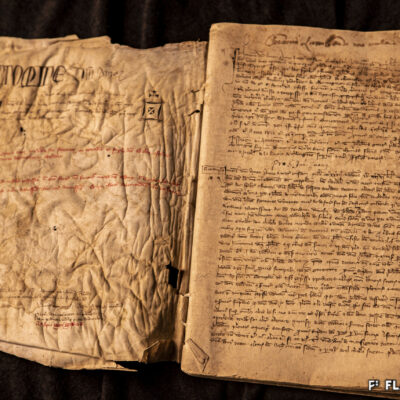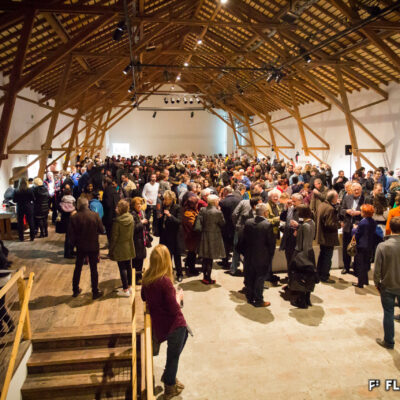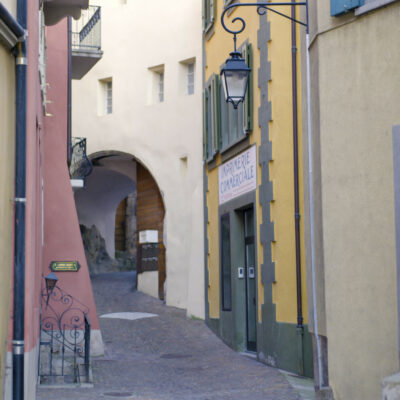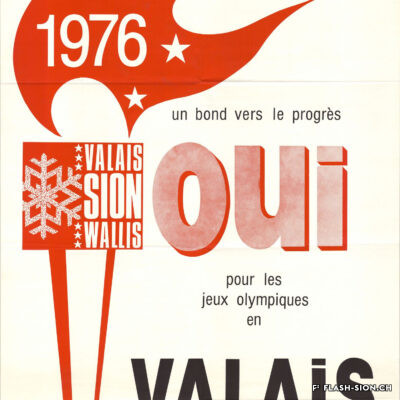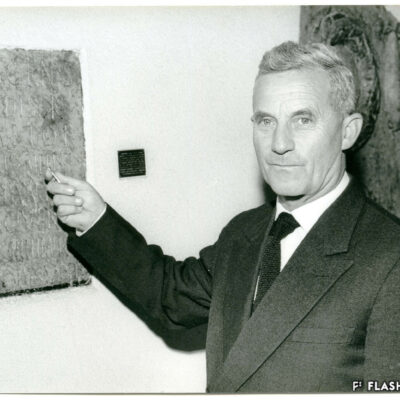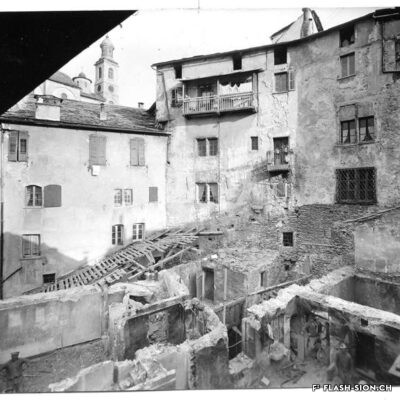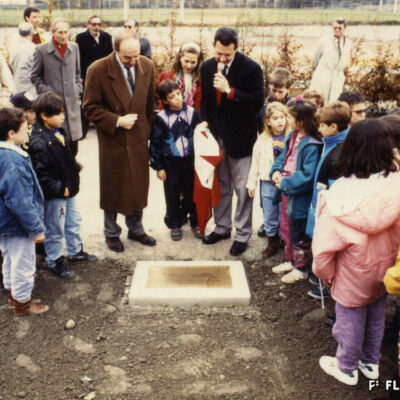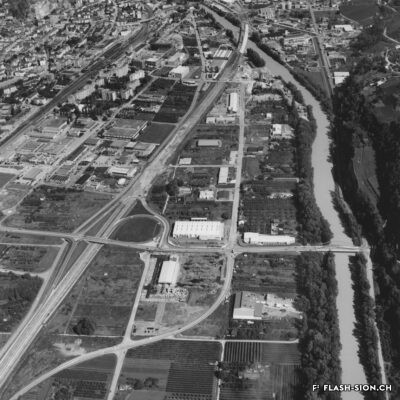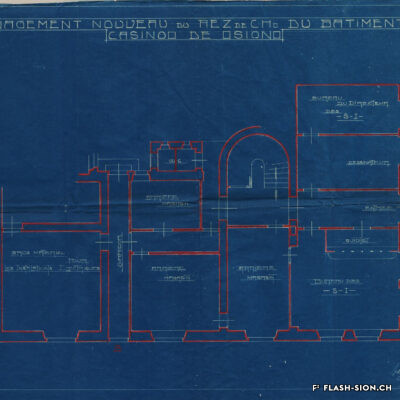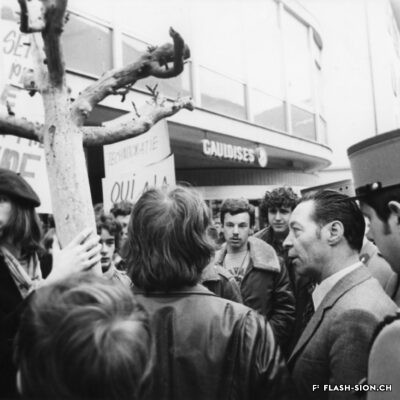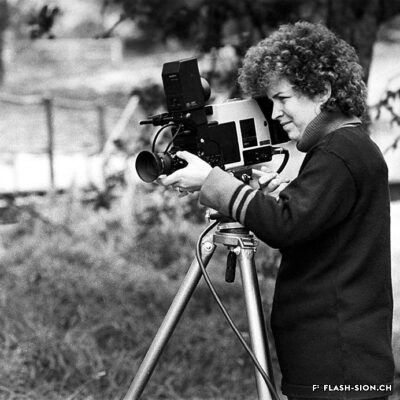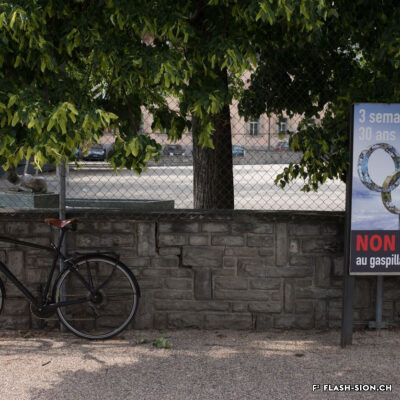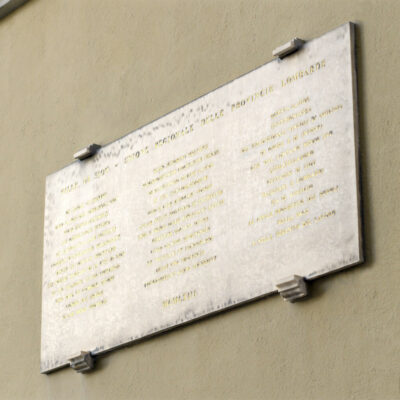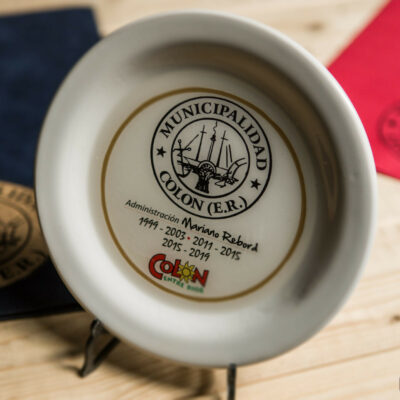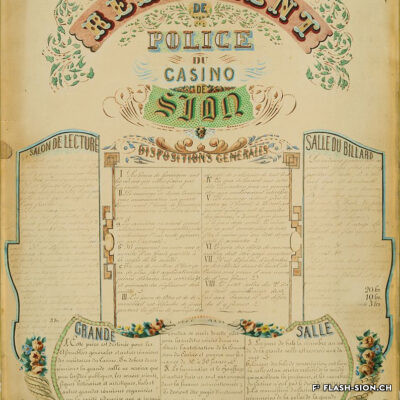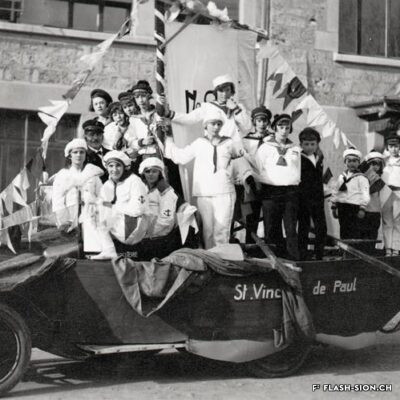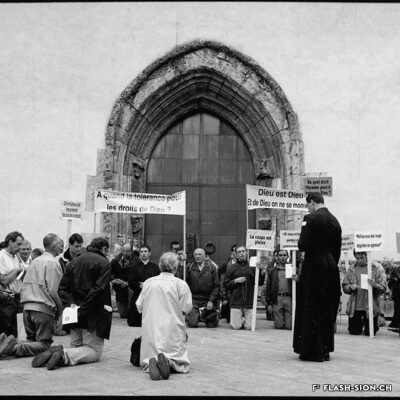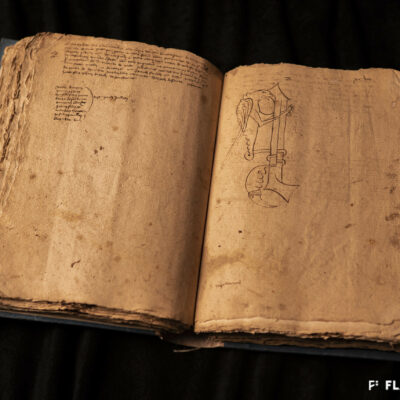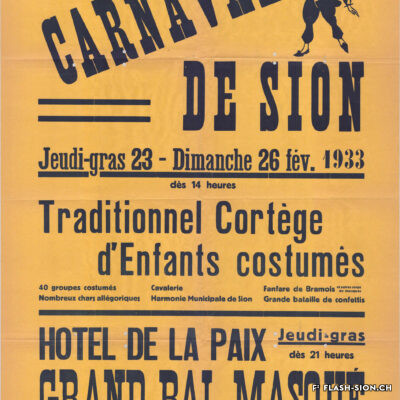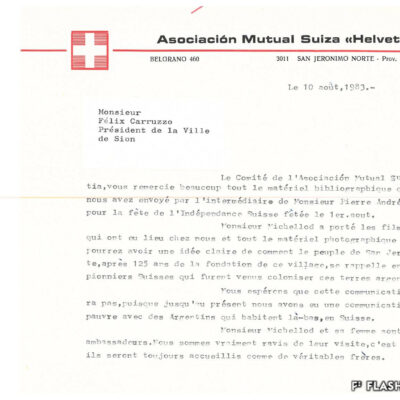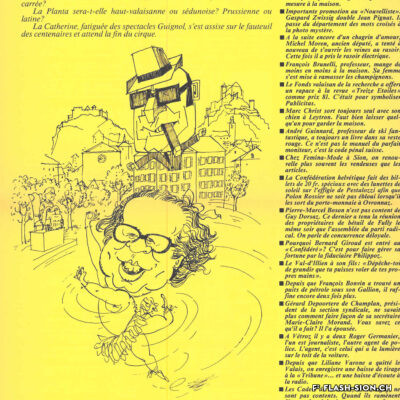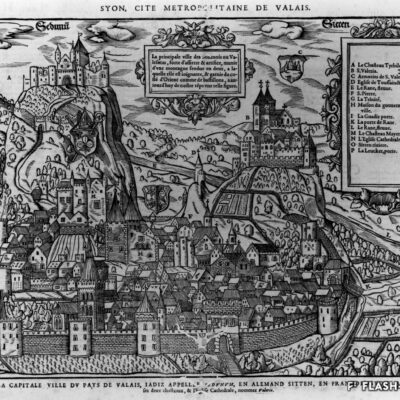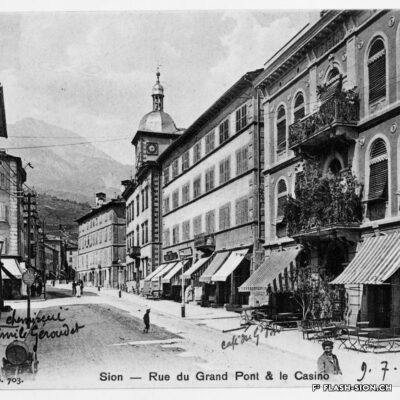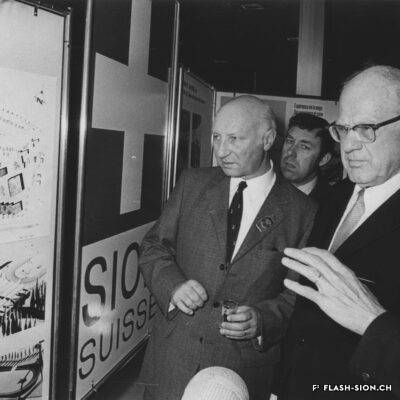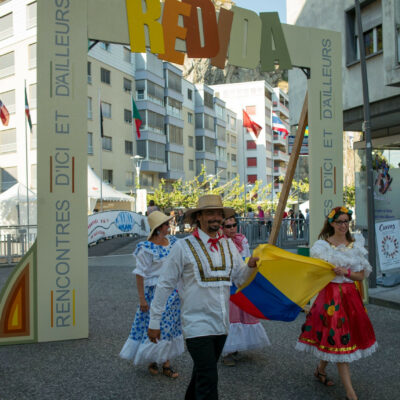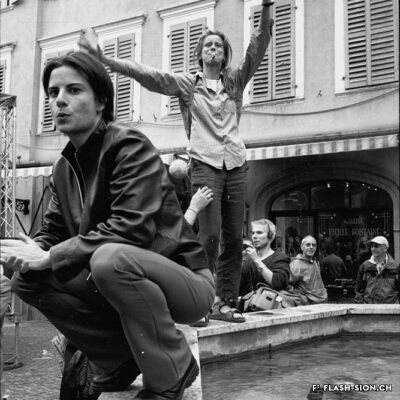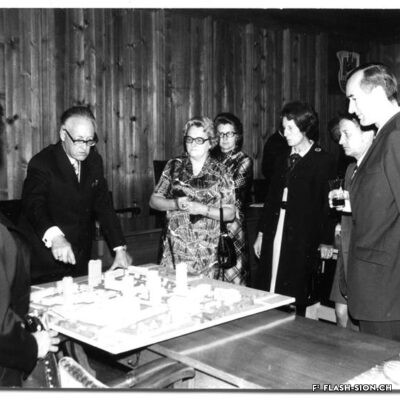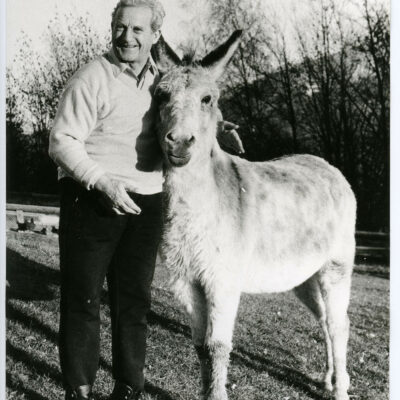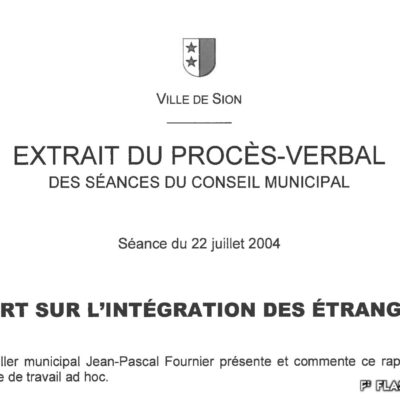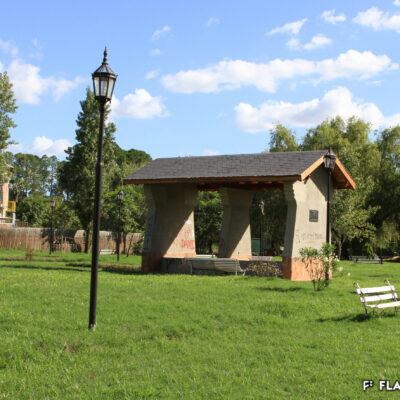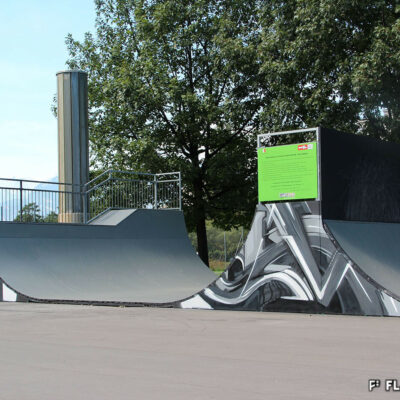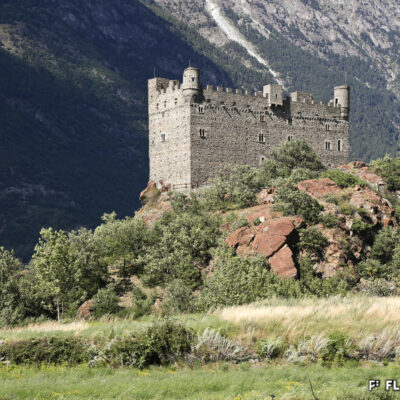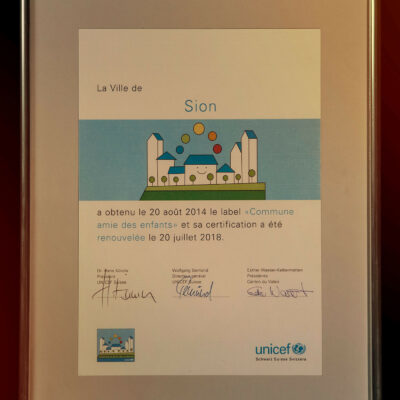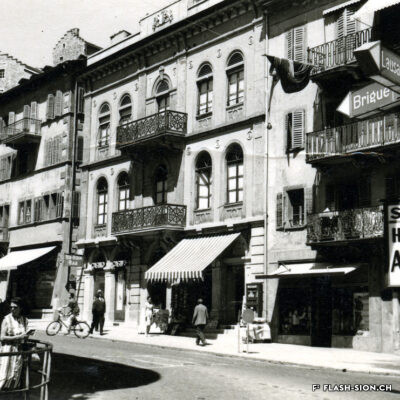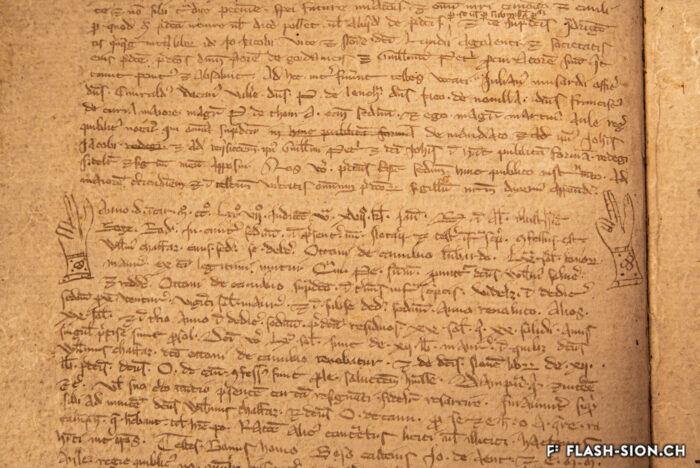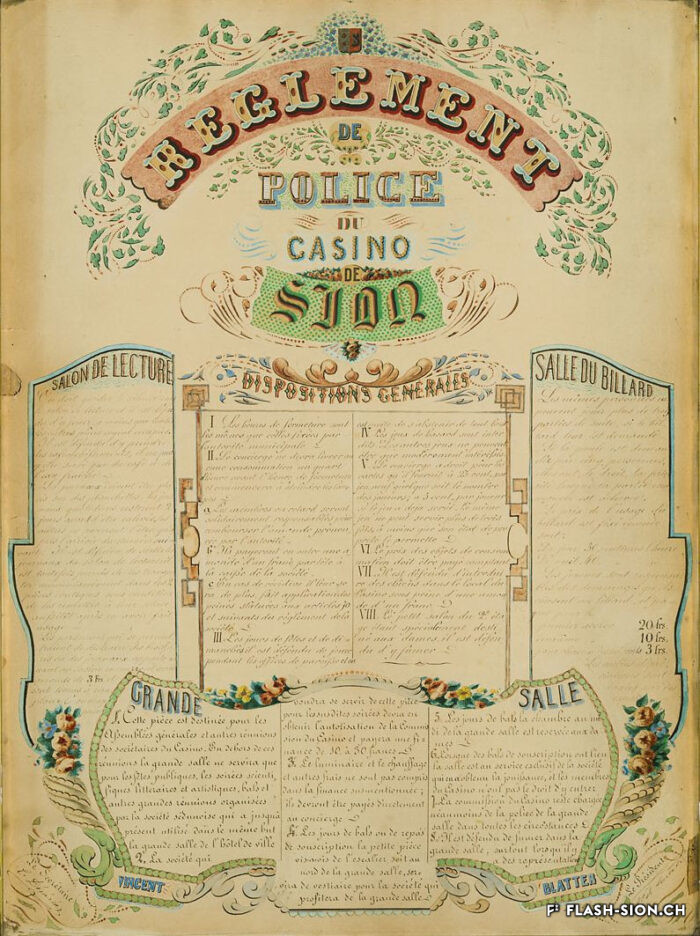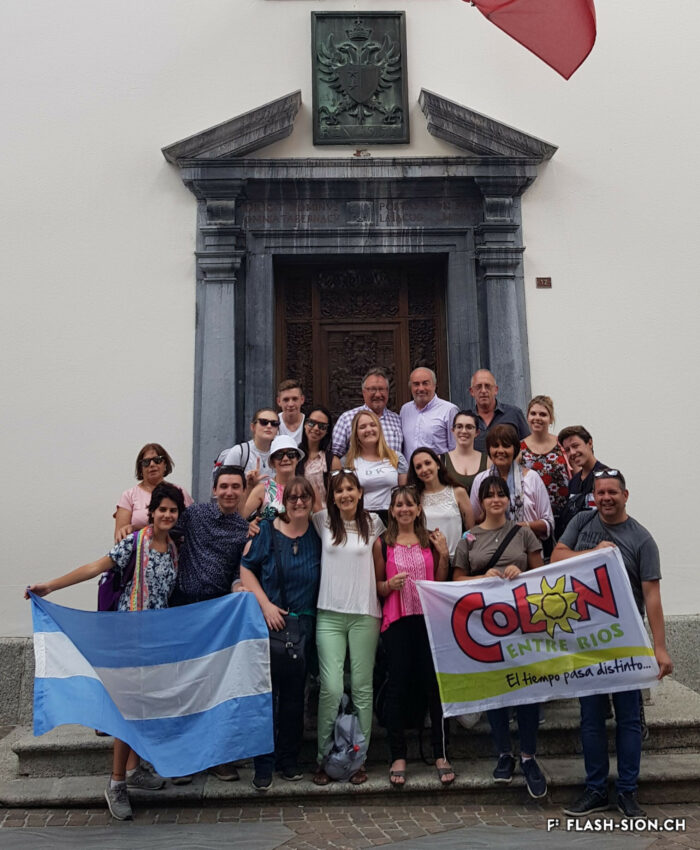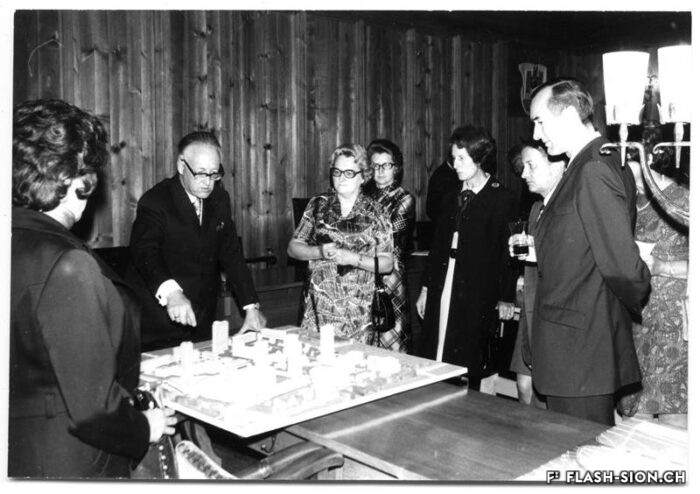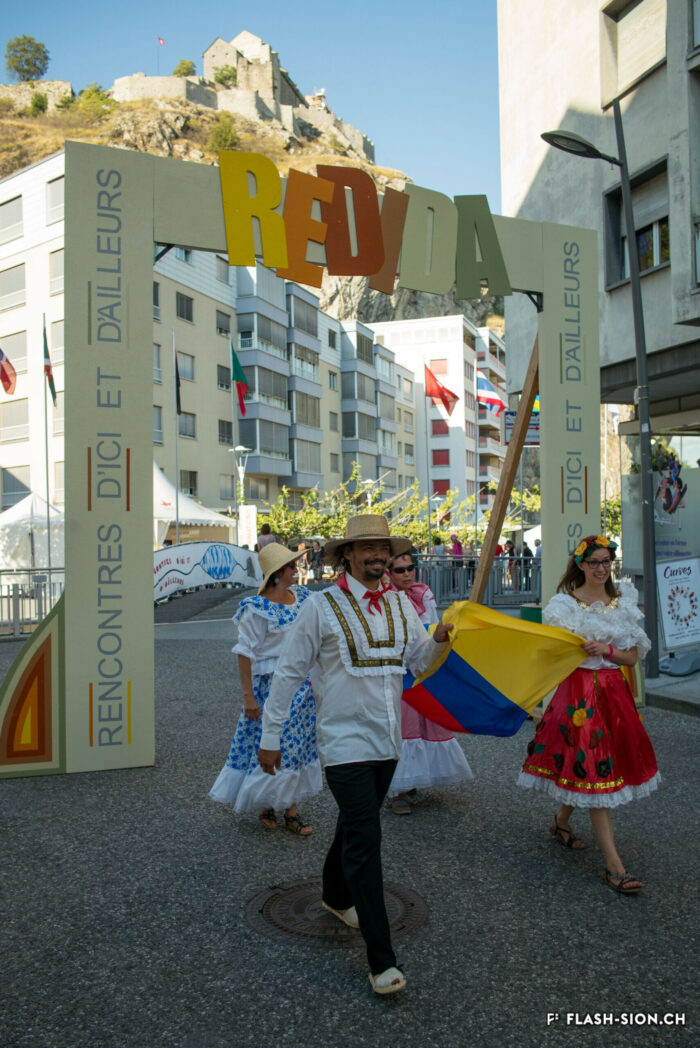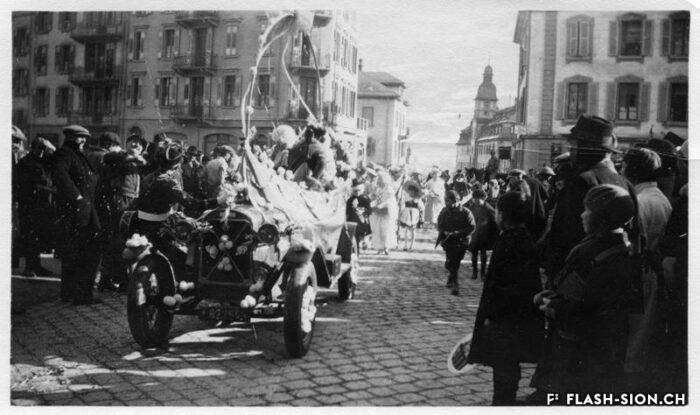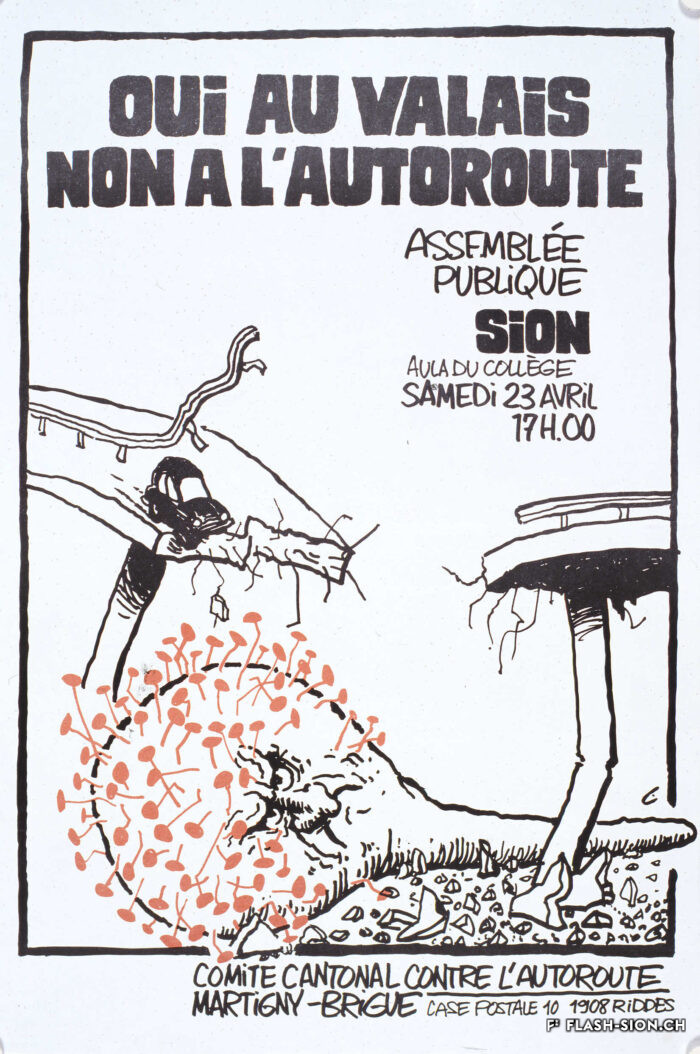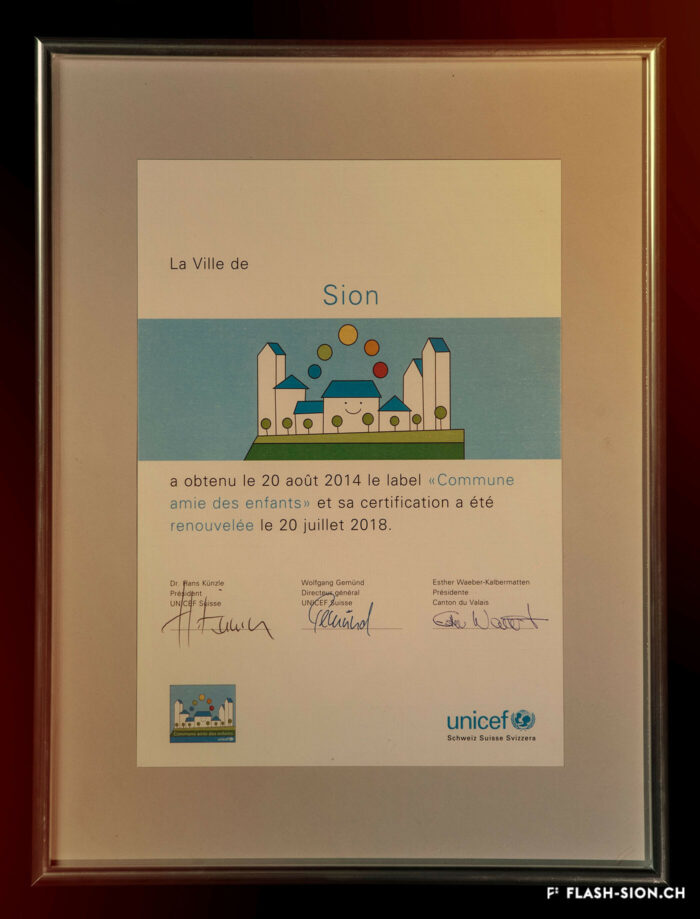Des Lombards à Sion
A Sion, la présence de Lombards est attestée dès le 13e siècle. Actifs dans la banque et le commerce, ils prennent part au développement de la vie économique et politique sédunoise. Pourtant, la mention du quartier « en Lombardie » n’apparaît dans les écrits qu’à partir du 17e siècle, soit plusieurs siècles après leur installation. La rue qui porte leur nom est un hommage tardif. Une plaque commémorative posée au début de la rue de la Lombardie renforce encore ce souvenir des liens qui unissent le Valais et la Lombardie.
Lombarden in Sitten
In Sitten ist die Präsenz von Lombarden ab dem 13. Jahrhundert belegt. Sie betätigten sich als Kaufleute und Bankiers und waren massgeblich an der politischen und wirtschaftlichen Entwicklung der Stadt beteiligt. Der Name des Stadtteils “en Lombardie” tritt jedoch erst im 17. Jahrhundert in den Schriften auf. Die Strasse, die heute ihren Namen trägt, ist eine späte Hommage. Am Anfang der Rue de la Lombardie erinnert eine Gedenktafel an die Beziehungen zwischen der Lombardei und dem Wallis.
Lombards in Sion
There is evidence that Lombards were present in Sion from the 13th century onwards. They played an active part in banking and commerce, and they contributed to the development of Sion’s economic and political life. However, the city district known as “en Lombardie” is not mentioned in documentation until the 17th century – several centuries after the Lombards settled here. The street that bears their name is a belated tribute. A commemorative plaque installed at the start of Rue de la Lombardie is another reminder of the bonds that link Valais and Lombardy.
I lombardi a Sion
A Sion, la presenza dei lombardi è confermata dal 13° secolo. Attivi nel settore bancario e commerciale, prendono parte allo sviluppo della vita economica e politica di Sion.
Ciò nonostante, la menzione del quartiere “in Lombardia” appare negli scritti solo dal 17° secolo, ossia molti secoli dopo il loro insediamento. La via, che porta il loro nome, è un omaggio tardivo. Una targa commemorativa installata all’inizio della via “rue de la Lombardie” rafforza maggiormente il ricordo dei legami tra il Vallese e la Lombardia.
Un évêque valdôtain
Boniface de Challant, évêque de Sion de 1290 à 1308, est originaire de l’une des familles les plus puissantes du Val d’Aoste. Sachant manier avec énergie et fermeté la crosse et l’épée, il commandite la construction du château de Tourbillon, érigé au tournant du 13e siècle. Il s’inscrit ainsi dans la tradition familiale de « bâtisseurs de châteaux-forts », les Challant ayant déjà fait édifier de nombreuses forteresses dans leur vallée d’origine.
Ein Bischof aus dem Aostatal
Der zwischen 1290 und 1308 als Bischof von Sitten amtierende Bonifaz de Challant stammte aus einer der einflussreichsten Familien des Aostatals. Er handhabte Bischofsstab wie Schwert mit Tatkraft und Entschlossenheit und blieb der Familientradition der “Burgenbauer” treu. Gelten doch die Challants als Auftraggeber zahlreicher Festungen in ihrer Heimatregion. Der Bau der Burganlage von Tourbillon, die um die Wende des 13. Jahrhunderts entstanden ist, wird allgemein Bonifaz de Challant zugeschrieben.
A bishop from Val d’Aosta
Boniface de Challant, Bishop of Sion from 1290 to 1308, came from one of the most powerful families in Val d’Aosta. As a vigorous and resolute wielder of the crook and the sword, he sponsored the construction of Tourbillon Castle, built at the turn of the 13th century. In so doing, he followed the family tradition of “builders of fortified castles”: the Challant family had already commissioned many fortresses in their home valley.
Un vescovo valdostano
Bonifacio di Challant, vescovo di Sion dal 1290 al 1308, proviene da una delle famiglie più potenti della Valle d’Aosta. Sapendo maneggiare con forza e fermezza il pastorale e la spada, commissiona la costruzione del castello di Tourbillon, eretto al volgere del 13° secolo. S’iscrive così a pieno titolo nella tradizione familiare dei “costruttori di fortezze”, visto che gli Challant avevano già fatto edificare numerose fortezze nella loro valle d’origine.
Des jeux de société aux jeux politiques
Contrairement à ce que son nom pourrait suggérer, le Casino de Sion n’a jamais hébergé de jeux de hasard sous son toit. Destiné à resserrer les liens de la société sédunoise, l’établissement, représentatif de l’architecte Emile Vuilloud, est construit en 1861 sur décision de la Bourgeoisie de Sion. L’édifice, avec sa grande salle de fête et les différents salons de lecture et de jeux de société, est inauguré en 1865. Parallèlement, la Société du Casino est constituée et un règlement de police strict est adopté. Après presque 40 ans d’existence, la société rencontre de plus en plus de difficultés à rassembler des membres. Elle est dissoute en 1904 et le bâtiment est racheté en 1912 par la Municipalité. En 1924, pour éviter de devoir mettre à disposition, à ses frais, des locaux plus spacieux pour les séances du Parlement valaisan, le conseil communal autorise le Grand Conseil à siéger, à bien plaire, dans la salle du Casino. Rénové et agrandi de 1938 à 1939, le Casino devient le siège permanent du Grand Conseil, excluant définitivement son utilisation parallèle comme salle de fête.
Von Gesellschaftsspielen zu politischen Spielchen
Entgegen seinem Namen sind im Casino von Sitten nie Glücksspiele angeboten worden. Der repräsentative Bau des Architekten Emile Vuilloud ist vielmehr dazu bestimmt, den gesellschaftlichen Zusammenhalt unter den Sittener Bürgern zu festigen und zu pflegen. 1861 beschliesst die Burgergemeinde von Sitten die Errichtung des Gebäudes. Die Einweihung des Casinos mit seinem großen Festsaal und den verschiedenen Salons zum Lesen und für Gesellschaftsspiele findet 1865 statt. Gleichzeitig erfolgt die Gründung der Société du Casino, welche ein strenges Polizeireglement für das Casino verabschiedet. Knapp 40 Jahre nach der Gründung verzeichnet die Gesellschaft jedoch zunehmend Schwierigkeiten, Mitglieder zu werben. Sie wird 1904 aufgelöst und das Gebäude 1912 von der Gemeinde aufgekauft. Um nicht auf eigene Kosten größere Räumlichkeiten für das Walliser Parlament zur Verfügung stellen zu müssen, kommt der Gemeinderat 1924 schliesslich dem Großen Rat entgegen und gestattet ihm, vorübergehend im Saal des Casinos zu tagen. Nach den Renovierungs- und Ausbauarbeiten zwischen 1938 und 1939 wird das Casino schliesslich zum ständigen Sitz des Großen Rates – eine parallele Nutzung als Festsaal wird damit endgültig ausgeschlossen.
From society games to political games
Contrary to what one might think of when considering its name, the Casino of Sion never hosted any gambling activities. The building was erected in 1861 upon approval of the Bourgeoisie of Sion. Well represeting the works of Emile Vuilloud, it aimed at reinforcing the bounds within the community members of Sion. The building was inaugurated in 1865 and consists of a huge hall for celebrations and several salons for reading and playing board games.
The ‘‘Société du Casino’’ was established concurrently and strict police regulations were enforced. Nearly 40 years later it was becoming harder and harder for the society to attract members, so it was dissolved in 1904 and the Municipality bought the building in 1912. In 1924, the town council -to avoid the costs that would have been encured by renting rooms more spacious for the meetings of the Parlement of Valais- gave the Grand Conseil the permission to sit ‘‘à bien plaire’’ (temporarily, so long as the Conseil approves of it) in the hall oft he Casino. It was renovated and extended between 1938 and 1939 and became the permanent seat of the Great Conseil, thus definitely excluding the possibilities to concurrently use it as a banquet hall.
Dai giochi di società ai giochi politici
Contrariamente a quanto potrebbe suggerire il nome, il Casinò di Sion non ha mai ospitato i giochi d’azzardo sotto il suo tetto. Destinato a rafforzare i legami della società di Sion, l’edificio rappresentativo dell’epoca, fu progettato dall’architetto Emile Vuilloud nel 1861 per decisione della borghesia di Sion. L’edificio con il grande salone delle feste e le varie sale di lettura e di giochi da tavolo, venne inaugurato nel 1865. Allo stesso tempo venne costituita la “Società del Casinò” e furono adottati severi regolamenti di polizia. Dopo quasi 40 anni di esistenza, la società trova sempre più difficoltà a riunire i membri. Fu sciolta nel 1904 e l’edificio fu acquistato nel 1912 dal Comune. Nel 1924, per evitare di dover fornire, a proprie spese, locali più spaziosi per le sedute del Parlamento vallesano, il Consiglio comunale autorizzò il Gran Consiglio a riunirsi, a suo piacimento, nella sala del Casinò. Ristrutturato e ampliato dal 1938 al 1939, il Casinò divenne la sede permanente del Gran Consiglio, escludendo definitivamente il suo utilizzo parallelo come salone delle feste.
Départ pour le Nouveau Monde
Hospitalité, bonheur et fortune, voilà ce que les Valaisans qui émigrent en Argentine au milieu du 19e siècle espèrent trouver. De nombreux Valaisans, pour la plupart des paysans, partent pour l’Amérique du Sud car ils arrivent à peine à survivre chez eux. Cette importante émigration entraîne la création de plusieurs colonies dont la ville de Colón, fondée en 1862. Le départ pour le Nouveau Monde est une réussite pour certains Valaisans qui invitent leurs proches à les rejoindre. Les liens entre les Valaisans d’Argentine et ceux restés au pays perdurent, entre autres, grâce à l’association Valais-Argentine et au jumelage entre Sion et Colón.
Aufbruch in die neue Welt
Gastfreundschaft, Glück und Reichtum erhofften sich die Walliser, welche Mitte des 19. Jahrhunderts nach Argentinien auswanderten. Unzählige Walliser, insbesondere Bauern, reisten nach Südamerika aus. Sie hatten in ihrer Heimat zu wenig zum Überleben. Diese massiven Auswanderungsströme führten zur Gründung verschiedener Kolonien, unter anderem der Stadt Colón im Jahre 1862. Der Aufbruch in die Neue Welt bescherte einigen Wallisern Erfolg. Diese regten wiederum Verwandte an, sich ihnen anzuschliessen. Die Beziehung zwischen den Wallisern in Argentinien und den Zurückgebliebenen werden dank der Vereinigung «Valais-Argentine» und der Städtepartnerschaft von Sion und Colón weiter gepflegt.
Departure for the New World
Hospitality, happiness, and wealth – this is what people emigrating from Valais to Argentina in the middle of the 19th century were hoping to find. Many people of Valais, mostly farmers, left for South America because they could barely survive in their homeland. As a result of this important wave of emigration, several colonies were founded, for instance the town of Colón, which was established in 1862. Some people of Valais, having made a successful start in the New World, invited their relatives to join them. The relationship between people of Valais established in Argentina and those who stayed in the country has been maintained, among other things, thanks to the Valais-Argentina Association and twinning projects between Sion and Colón.
Partenza per il nuovo mondo
Ospitalità, felicità e fortuna erano ciò che sperano di trovare i vallesani emigrando in Argentina a metà del 19esimo secolo. Numerosi vallesani, la maggioranza contadini, partirono per l’America del Sud poiché a casa loro sopravvivevano a malapena. Questa importante emigrazione, portò alla creazione di diverse colonie, tra cui la città di Colón, fondata nel 1862. La partenza per il Nuovo Mondo fu un successo per alcuni vallesani che invitarono i loro famigliari a raggiungerli. I legami tra i vallesani in Argentina e quelli che rimasti in patria continuano ad esistere, e questo grazie anche all’associazione Vallese-Argentina e al gemellaggio tra Sion e Colón.
L’impossible histoire des JO à Sion ?
Printemps 1960, un comité étudie pour la première fois la possibilité d’accueillir les Jeux Olympiques d’hiver (JO) à Sion en 1968. La population vote pourtant en 1963 contre le crédit prévu pour cette entreprise. Malgré un premier échec, des candidatures sont officiellement lancées pour les JO 1976, 2002, 2006 et 2026. Le refus provient tantôt du Comité International Olympique (CIO), par ailleurs accusé de corruption, tantôt des autorités communales, refusant de porter le projet sans l’appui financier du Canton et de la Confédération. Les citoyens valaisans, pour leur part, indignés de voir l’argent public investi dans un tel projet et pas ailleurs, craignent de devoir éponger un éventuel déficit. Alors que les candidatures de 2002 et 2006 font rêver une majorité de Valaisans, celle de 2026 a plutôt suscité les dissensions et mis en lumière le décalage entre les ambitions des promoteurs du projet et les préoccupations écologistes grandissantes au sein de la population. Malgré tout, l’idée d’une candidature est émise pour 2030, mais n’aboutit pas. Sion poursuivra-t-elle son rêve olympique à l’heure d’une possible candidature suisse pour 2030 ?
Die unmögliche Geschichte der Olympischen Spiele in Sitten
Im Frühjahr 1960 prüft ein Komitee erstmals die Möglichkeit zur Austragung von Olympischen Winterspielen 1968 in Sitten. Die Bevölkerung lehnt den vorgesehenen Kredit für das Vorhaben jedoch 1963 ab. Trotz dieser Abfuhr werden 1976, 2002, 2006 und 2026 weitere Olympia-Kandidaturen lanciert. Die Ablehnung der Bewerbungen ist einmal auf das damals der Korruption bezichtigte Olympische Komitee (IOC) zurückzuführen, ein andermal auf die Gemeindebehörden, die das Projekt nicht ohne finanzielle Absicherung durch Kanton und Bund zu tragen bereit sind. Die Walliser Bevölkerung wiederum zeigt sich empört darüber, dass öffentliche Gelder nicht besser investiert werden, und befürchtet, dass der Ausgleich eines allfälligen Defizits auf sie zurückfällt. Während bei den Olympia-Kandidaturen von 2002 und 2006 noch eine Mehrheit der Walliser Bevölkerung mitfiebert, führt die Bewerbung für die Spiele von 2026 eher zu Meinungsverschiedenheiten und zeigt eine zunehmende Diskrepanz zwischen den Ambitionen der Befürwortenden und dem wachsenden ökologischen Bewusstsein in der Bevölkerung auf. Dennoch wird eine Walliser Kandidatur 2030 nochmals in Erwägung gezogen, bevor diese kurz darauf fallen gelassen wird. Ob sich Sittens Olympia-Traum über die aktuellen Bestrebungen für eine Schweizer Kandidatur 2030 doch noch verwirklichen lässt, bleibt dahingestellt.
The impossible tale of the Olympic Games in Sion?
In the spring of 1960, for the first time, a committee studied the possibility of hosting the 1968 Winter Olympic Games in Sion. However, in 1963, the population voted against funding this project. Despite this initial defeat, bids were officially submitted for the 1976, 2002, 2006 and 2026 Olympic Games. The opposition came either from the International Olympic Committee (IOC), incidentally accused of corruption or from the local authorities, who refused to support a project without the financial support of the Canton and the Confederation. The local population, outraged to see public money being invested in such a project and not elsewhere, feared that they would have to cover any potential deficit. While the 2002 and 2006 bids revealed a united and utopic Valais, the 2026 bid sparked divisions and highlighted the gap between the ambition of the promoters of the project and the growing environmental concerns of the population. The idea of another bid for 2030 has nonetheless been issued but did not come to fruition. Will Sion pursue its olympic ambition despite Switzerland becoming a potential candidate for 2030?
La storia impossibile dei Giochi Olimpici a Sion?
Nella primavera del 1960, un comitato studiò per la prima volta la possibilità di ospitare le Olimpiadi invernali a Sion del 1968. Tuttavia, nel 1963 la popolazione votò contro il credito previsto per questo progetto. Nonostante un iniziale insuccesso, furono lanciate ufficialmente le candidature per i Giochi Olimpici del 1976, 2002, 2006 e 2026. Il rifiuto arrivò sia dal Comitato Olimpico Internazionale (CIO), accusato inoltre di corruzione, e dalle autorità comunali, che si sono rifiutate di sostenere il progetto senza l’appoggio finanziario del Cantone e della Confederazione. I vallesani, dal canto loro, indignati nel vedere il denaro pubblico investito in un progetto del genere e non altrove, temono di dover coprire un eventuale deficit. Mentre le candidature del 2002 e del 2006 rappresentano il sogno della maggioranza dei vallesani, quella del 2026 è stata più che altro fonte di dissenso, evidenziando la discrepanza tra le ambizioni dei promotori del progetto e le crescenti preoccupazioni ecologiche della popolazione. Tuttavia, l’idea di una candidatura vallesana è stata avanzata per il 2030, ma non è stata realizzata. Sion perseguirà il suo sogno olimpico in vista di una possibile candidatura svizzera per il 2030?
Bonvin, Président(s) !
Un Valaisan Président de la Confédération ! Une grande première en 1967 pour Roger Bonvin, ancien Président de Sion de 1955 à 1962. Six années durant, Roger Bonvin voua corps et âme au développement de sa ville, notamment en terme d’urbanisation, avant d’être élu conseiller fédéral en 1962. Homme d’action proche du peuple, cet ingénieur de formation était connu pour aller « droit au but » et pour susciter l’enthousiasme de son auditoire.
Vom Gemeindepräsidenten zum Bundespräsidenten
Ein Walliser wird Bundespräsident! Das Jahr 1967 bedeutete für Roger Bonvin eine grosse Premiere. Der frühere Gemeindepräsident von Sitten hatte sich zwischen 1955 und 1962 mit viel Herzblut dem Gemeindegeschehen und der Entwicklung seiner Stadt gewidmet, bevor er im Jahre 1962 in den Bundesrat gewählt wurde. Als Mann der Tat und für seine Volksnähe bekannt, verstand es der gelernte Bauingenieur zielstrebig ans Werk zu gehen und seine Zuhörer in den Bann zu ziehen.
From Mayor to President!
A Valais-born President of the Swiss Confederation! Roger Bonvin, Sion’s Mayor from 1955 to 1962, scored a first for the canton when he became the nation’s President in 1967. For six years, Roger Bonvin devoted body and soul to developing his city, especially in terms of urban planning, before he was elected to the Federal Council in 1962. An engineer by training, Bonvin was a man of action who had a close bond with the people. He was renowned for “getting straight to the point” and rousing his audience’s enthusiasm.
Bonvin, Président(s) !
Un Valaisan Président de la Confédération ! Une grande première en 1967 pour Roger Bonvin, ancien Président de Sion de 1955 à 1962. Six années durant, Roger Bonvin voua corps et âme au développement de sa ville, notamment en terme d’urbanisation, avant d’être élu conseiller fédéral en 1962. Homme d’action proche du peuple, cet ingénieur de formation était connu pour aller « droit au but » et pour susciter l’enthousiasme de son auditoire.
Carole Roussopoulos, vidéaste citoyenne
Née de Kalbermatten, Carole Roussopoulos (1945-2009), voit le jour à Sion, petite ville de 20 000 habitants où les jeunes n’ont pas accès au cinéma avant leurs 18 ans. Élevée dans un milieu bourgeois plutôt cadré, la jeune femme découvre à 22 ans la « vidéo légère » et Paris, en pleine émulation des années 1968. Cette période extrêmement stimulante éveille la passion de celle qui deviendra une réalisatrice féministe et engagée. Son credo ? Donner la parole aux « sans voix », aux minorités qu’on écoute pas. Son moteur ? La colère envers les injustices. Durant sa carrière, elle tourne aussi bien en France et en Suisse qu’ailleurs dans le monde. Très attachée à sa ville natale, elle reviendra en 1992 s’établir à Molignon et continuera de couvrir des sujets de société, souvent difficiles et délicats, mais nécessaires au changement des mentalités. Avec plus de 120 films à son actif, elle se positionne, presque malgré elle, en véritable pionnière du film documentaire.
Carole Roussopoulos, Videoaktivistin
Carole Roussopoulos (1945-2009), geborene de Kalbermatten, verbringt ihre Kindheit in der Kleinstadt Sitten, die damals 20 000 Einwohner zählt und Jugendlichen unter 18 Jahren den Zutritt ins Kino untersagt. Sie wächst in einem streng bürgerlichen Umfeld auf und entdeckt mit 22 Jahren, auf dem Höhepunkt der Jugendbewegungen der 1968er Jahre, die Videotechnik und Paris. Diese stimulierende Zeit weckt die Leidenschaft der feministischen und engagierten Videoschaffenden. Ihr Leitsatz? Minderheiten eine Stimme geben. Ihr Antrieb? Die Wut über Ungerechtigkeiten. Im Laufe ihrer Karriere dreht sie in Frankreich und der Schweiz, aber auch in anderen Teilen der Welt. Ihrer Heimatstadt bleibt sie verbunden und kehrt 1992 nach Molignon zurück. Von hier aus berichtet sie weiterhin über schwierige und heikle gesellschaftliche Themen, um den notwendigen Mentalitätswandel herbeizuführen. Mit ihren über 120 Videofilmen wird sie, fast unfreiwillig, zu einer anerkannten Pionierin des Dokumentarfilms.
Carole Roussopoulos, a civic videographer
Carole Roussopoulos (1945-2009), née de Kalbermatten, was born in Sion, a small town of 20’000 inhabitants, where young people weren’t allowed in cinemas until the age of 18. Raised in a rather strict bourgeois environment, the 22-year-old discovers “light video” and Paris at the height of the 1968 movements. This extremely stimulating period awakened the future feminist and militant director’s passion. Her credo? Give a voice to the voiceless, to the minorities no one listens to. Her driving force? Anger at injustice. During her career, she filmed both in France and Switzerland as well as abroad. Very fond of her hometown, she came back to settle in Molignon in 1992 and continued to cover social issues, which are often difficult and sensitive, but necessary for the changing of mentalities. With more than 120 films to her credit, she earned her position, almost in spite of herself, as a true pioneer of documentary film.
Carole Roussopoulos, videografa cittadina
Nata de Kalbermatten, Carole Roussopoulos (1945-2009) viene alla luce a Sion, una cittadina di 20.000 abitanti dove i giovani non hanno accesso al cinema prima dei 18 anni. Cresciuta in un ambiente borghese piuttosto strutturato, all’età di 22 anni, la giovane donna scopre il “video leggero” e Parigi, in piena emulazione degli anni 1968. Questo periodo estremamente stimolante risveglia la passione di colei che diventerà una regista femminista e impegnata. Il suo credo? è dare la voce ai “senza voce”, alle minoranze che non vengono ascoltate. La sua forza motrice? La rabbia per le ingiustizie. Nel corso della sua carriera ha girato in Francia, in Svizzera e in altre parti del mondo. Molto legata alla sua città natale, si è trasferita a Molignon nel 1992 e continua ad occuparsi di temi sociali, spesso difficili e delicati, ma necessari per cambiare la mentalità. Con più di 120 film al suo attivo, si posiziona, quasi suo malgrado, come una vera pioniera del cinema documentario.
Nouveaux arrivants
La plus grande vague d’immigration intervient lors du boom économique d’après-guerre qui s’accompagne d’un besoin massif de main-d’œuvre. Les saisonniers étaient alors des travailleurs « invisibles » vivant séparés de leur famille. Parallèlement, la Suisse accueille après 1950 des réfugiés cherchant à fuir leur pays d’origine. Les prémisses d’une politique d’intégration ne sont formulés qu’à partir des années 1970. L’intégration repose alors sur des initiatives associatives telle que l’Association valaisanne d’interprétariat communautaire (AVIC). La Ville de Sion crée en 2005 la première commission des étrangers et recrute en 2006 sa première déléguée à l’intégration. La Ville formule ainsi sa volonté de soutenir le secteur associatif et de développer des mesures d’accueil et d’intégration.
Neuzuziehende
Die grösste Migrationswelle erlebt die Schweiz während des Wirtschaftsbooms der Nachkriegszeit, als der Bedarf an Arbeitskräften massiv ansteigt. Die sogenannten Saisonniers lebten damals getrennt von ihren Familien und wurden als blosse «Arbeitskräfte» betrachtet. Gleichzeitig nimmt die Schweiz ab 1950 Flüchtlinge auf, die aus ihren Herkunftsländern fliehen müssen. Erste Grundsteine für eine Integrationspolitik werden jedoch erst ab den 1970er Jahren gelegt. Die Integration stützt sich vorerst in erster Linie auf die Initiative von Vereinen ab, wie beispielsweise die «Association valaisanne d’interprétariat communautaire» (AVIC, Walliser Dolmetscherverband). Die Stadt Sitten richtet 2005 die erste Ausländerkommission ein und schafft 2006 eine Stelle für eine Integrationsbeauftragte. Damit unterstreicht sie ihren Willen, die gemeinnützigen Institutionen zu unterstützen und die Aufnahme und Integration zu fördern.
Newcomers
The largest wave of immigration occurred during the post-war economic boom, accompanied by a great need for labour. Seasonal workers became « invisible » workers living apart from their families. Since 1950, Switzerland has also welcomed refugees seeking to flee their country of origin. The foundations of an integration policy had not been formulated until 1970s. The integration became based on initiative associations such as the Association for Community Interpreting in Valais (AVIC). In 2005, the City of Sion created the first foreigners’ commission and recruited the first Integration Officer in 2006. In that way the city expressed determination to support the associative sector and to develop reception and integration measures.
Nuovi arrivati
La più grande ondata d’immigrazione si è verificata durante il boom economico del dopoguerra, che è stato accompagnato da un bisogno massiccio di manodopera. Gli stagionali erano allora dei lavoratori « invisibili » che vivevano separati dalle loro famiglie. Allo stesso tempo, dopo il 1950, la Svizzera ha accolto i rifugiati che cercavano di fuggire dal loro paese d’origine. Le premesse di una politica d’integrazione sono state formulate solo a partire dal 1970. L’integrazione si basava allora su iniziative associative come l’Associazione vallesana d’interpretariato comunitario (AVIC) (l’Association valaisanne d’interprétariat communautaire, AVIC). Nel 2005 la città di Sion ha creato la prima commissione per stranieri e nel 2006 ha assunto la sua prima delegata all’integrazione. La Città ha così espresso la sua volontà di sostenere il settore associativo e di sviluppare delle misure d’accoglienza e d’integrazione.
Le carnaval de Sion, entre subversion et respect de l’ordre
Les origines du carnaval sont assez floues, mais son étymologie « Carnelevare » qui signifie « enlever la viande », le lie au Carême chrétien. Le carnaval, période de festivités, de joie et d’excès avant la privation, laisse place à l’imaginaire. A travers les masques et les déguisements, la population peut se jouer de l’ordre social établi pendant un laps de temps bien défini. Pour éviter les débordements, les autorités religieuses et politiques imposent des règles à cette fête. Sion ne fait pas exception. En 1849, le président de la Ville fait édicter un règlement pour que bals et travestissements soient soumis à son autorisation. Plus tard, cette prérogative passera dans les mains de la police communale. Durant le carnaval, des bals masqués, des représentations théâtrales ainsi que des cortèges sont organisés à Sion. Pour rendre ces festivités plus acceptables, une partie des recettes récoltées est remise à des œuvres de charité. Aujourd’hui, les carnavals modernes doivent donc jongler entre l’agitation inhérente à la fête et les règles à respecter. Depuis 1975, l’association du Carnaval de Sion s’occupe de relever ce défi.
Der Karneval von Sitten, zwischen Subversion und Ordnungsliebe
Der Ursprung des Karnevals ist nicht eindeutig geklärt, “Carnelevare” bedeutet jedoch so viel wie “das Fleisch wegnehmen», was auf die christliche Fastenzeit hinweist. Der Karneval, eine Zeit der Ausgelassenheit, Freude und Exzesse vor der Entbehrung, lässt Raum für Fantasie. Dank Masken und Verkleidung kann die etablierte soziale Ordnung während einer genau festgelegten Zeitspanne auf den Kopf gestellt werden. Um während dieser Zeit der Narrenfreiheit Ausschreitungen zu vermeiden, erlassen religiöse und politische Behörden entsprechende Vorschriften. Sitten bildet in diesem Zusammenhang keine Ausnahme. So unterstellt der Stadtpräsident 1849 Fastnachtsbälle und Crossdressing einer Genehmigung. Später wird die Verantwortung für die Einhaltung der Ordnung der Gemeindepolizei übertragen. Während der Karnevalszeit finden in Sitten Maskenbälle, Theateraufführungen und Umzüge statt. Um dem bunten Treiben eine akzeptable Note zu verleihen, wird ein Teil der Einnahmen an wohltätige Organisationen gespendet. Seit 1975 stellt sich der Karnevalsverein von Sitten alljährlich der Herausforderung, die typische Ausgelassenheit des Festes mit der Einhaltung der gültigen Vorschriften in Einklang zu bringen.
The carnival in Sion, a mix between subversivness and respecting public order
The origins of carnival are rather unclear, but its etymology “Carnelevare”, meaning “to remove meat”, links it to Christian Lent. Carnival, a time of festivities, joy and extravagance before deprivation, lets imagination run wild. Through the use of masks and disguises, people can make fun of the existing social order for a well-defined period of time. To avoid any excess, religious and political authorities used to enforce rules around this celebration. Sion is no exception. In 1849, president of the town issued rules requiring his personal authorization for balls and masquerades. This prerogative was later transferred to the local police. During Carnival, masked balls, theatrical performances and parades were organised in Sion. To make those festivities more acceptable, a part of the incomes was donated to charities. Today, modern carnivals therefore have to balance the excitement inherent to festivities with the rules that have to be respected. The Sion Carnival Association has been meeting this challenge since 1975.
Il carnevale di Sion, tra sovversione e rispetto dell’ordine
Le origini del carnevale sono piuttosto vaghe, ma la sua etimologia, “Carnelevare” che significa “togliere la carne”, lo collega alla Quaresima cristiana. Il Carnevale, periodo di festeggiamenti, di gioia e di eccessi prima delle privazioni, lascia spazio all’immaginazione. Attraverso maschere e travestimenti, la popolazione può giocare con l’ordine sociale costituito per un periodo di tempo ben definito. Per evitare eccessi, le autorità religiose e politiche impongono delle regole a questa festa. Sion non fa eccezione. Nel 1849, il presidente della città emanò un regolamento affinché i balli e i travestimenti fossero soggetti alla sua autorizzazione. Successivamente tale prerogativa passerà nelle mani della polizia municipale. Durante il Carnevale a Sion vengono organizzati balli in maschera, spettacoli teatrali e cortei. Per rendere più gradite queste festività, parte del ricavato raccolto viene devoluto in beneficenza. Oggi i carnevali moderni devono quindi destreggiarsi tra la frenesia dei festeggiamenti e le regole da rispettare. È dal 1975, che l’associazione del Carnevale di Sion affronta questa sfida.
Roulez dans la paix du Christ !
Près d’un quart de siècle après l’approbation du premier projet d’autoroute en Valais, l’évitement de la capitale sera terminé en 1991. Sous la pression de différents mouvements d’opposition, le projet initial est entièrement revu par la commission Bovy. Celle-ci renonce à la traversée de la ville sur pilotis au profit d’une solution enterrée. Ainsi, le 16 décembre 1991, sous la bénédiction du cardinal Henri Schwery, le conseiller d’état Bernard Bornet et le conseiller fédéral Adolf Ogi inaugurent le tronçon Sion-Ouest Sion-Est de l’A9 d’une longueur de 3km et d’un coût total de 158 millions de francs. L’espace de la tranchée couverte de 710 mètres, baptisé Cours Roger-Bonvin, est devenu depuis un véritable trait d’union verdoyant entre les quartiers de Vissigen et de Champsec en plein développement.
Fahret hin in Frieden !
Knapp ein Vierteljahrhundert nach der Genehmigung des ersten Autobahnprojekts im Wallis wird die Umfahrung von Sitten 1991 fertiggestellt. Unter dem Druck verschiedener Autobahngegnerbewegungen wird das ursprüngliche Projekt von der speziell einberufenen Kommission Bovy komplett überarbeitet. Diese verzichtet auf die ursprünglich geplante Durchquerung der Stadt Sitten auf Pfeilern und ersetzt diese durch eine unterirdische Lösung. Am 16. Dezember 1991 weihen Staatsrat Bernard Bornet und Bundesrat Adolf Ogi unter dem Segen von Kardinal Henry Schwéry den Abschnitt Sion-Ouest Sion-Est der A9 ein. Der 3 km lange Abschnitt kostet 158 Millionen Franken. Der «Cours Roger Bonvin», der 710 Meter lange gedeckte Einschnitt, ist zu einem willkommenen grünen Bindeglied zwischen den sich stark entwickelnden Quartieren von Vissigen und Champsec geworden.
Drive in the peace of Christ !
Nearly a quarter of century after the first highway project in Valais was approved of, the project circumventing the capital was completed in 1991. Under the pressure of several movements opposing the early project, it was fully reviewed by the Bovy commission: it renounced going across the town on a road suspended on stilts, but chose instead to bury the construction. Thus, on 16 December 1991 –with the blessing of cardinal Henri Schwery- both the state councillor Bernard Bornet and the federal councillor Adolf Ogi inaugurated the Sion-West Sion-East section of Highway A9. It was 3km long and cost 158 million francs. The trench-like 710-meters wide space named Cours Roger-Bonvin has become since then a real lushfull place connecting area between the district of Vissigen and the currently developping district of Champsec.
Guidare nella pace di Cristo !
Quasi un quarto di secolo dopo l’approvazione del primo progetto autostradale nel Vallese, la circonvallazione della capitale sarà completata nel 1991. Sotto la pressione di diversi movimenti di opposizione, il progetto iniziale viene completamente rivisto dalla commissione Bovy. Si rinuncia ad attraversare la città sulle palafitte a favore di una soluzione sotterranea. Il 16 dicembre 1991, sotto la benedizione del cardinale Henri Schwery, il consigliere di Stato Bernard Bornet e il consigliere federale Adolf Ogi inaugurarono il tratto di 3 km Sion-Ouest-Sion-Est della A9, per un costo totale di 158 milioni di franchi svizzeri. Lo spazio coperto della trincea di 710 metri, chiamato Cours Roger-Bonvin, è da allora diventato un vero e proprio collegamento verde tra i quartieri in rapido sviluppo di Vissigen e Champsec.
Sion aux couleurs de l’arc-en-ciel
Fin 2000, un comité mené par Marianne Bruchez se lance dans la courageuse organisation d’une Lesbian and Gay Pride & Friends à Sion, au grand dam des milieux conservateurs. Majoritairement défavorable à la tenue de la manifestation, le conseil municipal ne peut formellement l’interdire et appelle les organisateurs à y renoncer. Ces derniers maintiennent pourtant leur position. La tension s’installe et l’opinion publique s’agite. L’Evêque dénonce un jeu diabolique. Une page publicitaire contre la Pride, accompagnée d’une pétition, est publiée dans la presse et vient mettre le feu aux poudres. Le débat s’enflamme, les articles de presse déferlent, les critiques s’additionnent, jusqu’au jour J, montrant d’autant plus l’importance de l’évènement face à l’intolérance et aux attaques homophobes. En mars, à l’unanimité, et afin de respecter le droit constitutionnel, le conseil municipal autorise la tenue de la manifestation. Grâce à la persévérance de sa coordinatrice, la « première Gay Pride romande du 21e siècle » aura bien lieu, le 7 juillet 2001, sans débordements, réunissant plus de 15 000 personnes dans l’amour et le respect de tous-tes.
Sitten in den Farben des Regenbogens
Unter der Leitung von Marianne Bruchez wagt ein Komitee Ende 2000 den mutigen Schritt, eine «Lesbian and Gay Pride & Friends» in Sitten zu organisieren, dies zum grossen Missfallen der konservativen Kreise. Der Stadtrat, dessen Mehrheit sich gegen die Parade ausspricht, kann diese jedoch nicht formell verbieten und fordert somit die Organisierenden zu einem Verzicht der Veranstaltung auf. Diese wiederum halten an ihrer Position fest. So kommt es zu unvermeidbaren Spannungen und die öffentliche Meinung schlägt hohe Wellen. Der Bischof bezeichnet die Veranstaltung als ein Spiel mit dem Teufel. Eine Werbekampagne begleitet von einer Petition gegen die Pride erscheint in der lokalen Presse und führt zu weiterem Zündstoff. Die Debatte entflammt, die Presse überschlägt sich, die Kritik häuft sich bis zum Austragungstag und zeigt, welche Bedeutung die Veranstaltung angesichts der Intoleranz und der homophoben Angriffe einnimmt. Im März genehmigt der Stadtrat schliesslich einstimmig die Veranstaltung, um das Verfassungsrecht zu respektieren. Dank dem Durchhaltewillen der Koordinatorin findet am 7. Juli 2001 die “erste Westschweizer Gay Pride des 21. Jahrhunderts” ohne jegliche Ausschreitungen statt. Sie verbindet mehr als 15’000 Teilnehmende in Liebe und gegenseitigem Respekt.
A rainbow coloured Sion
At the end of 2000, a committee led by Marianne Bruchez bravely set out to organize a Lesbian and Gay Pride & Friends in Sion, much to the displeasure of conservative sectors. Most of the city council declared itself against this event, but could not formally ban it. Although the committee was suggested to give up, the latter maintained its position. Tension arose and public opinion grew agitated. The bishop condemned what he called a demonic game. An advertisement against the event, accompanied by a petition, published in the press, sparked things off. The debate became heated, press articles poured in and criticism grew up until D-Day, demonstrating all the more the importance of the event in the face of intolerance and homophobic attacks. In March, the council finally unanimously approved the event. Thanks to the perseverance of its coordinator, the “first Gay Pride in French-speaking Switzerland in the 21st century” took place on 7 July 2001, without any incidents, bringing 15’000 people together in a spirit of love and respect for everyone.
Sion nei colori dell’arcobaleno
Alla fine del 2000, un comitato guidato da Marianne Bruchez si è lanciato nella coraggiosa organizzazione di un Lesbian and Gay Pride & Friends a Sion, con grande dispiacere degli ambienti conservatori. Sebbene la maggioranza del consiglio comunale fosse contraria all’evento, non riuscì a vietarlo formalmente e invitò il comitato a ritirarsi. Tuttavia, quest’ultimo mantiene la sua posizione. La tensione cresce e l’opinione pubblica è agitata. Il Vescovo denuncia un gioco diabolico. Una pagina pubblicitaria contro il Pride, accompagnata da una petizione, viene pubblicata nella stampa e da fuoco alle polveri. Il dibattito si accende, gli articoli di stampa aumentano, le critiche si accumulano, fino al D-day, dimostrando ancora di più l’importanza dell’evento di fronte all’intolleranza e agli attacchi omofobi. A marzo, all’unanimità e nel rispetto della legge costituzionale, il Consiglio comunale ha autorizzato lo svolgimento della manifestazione. Grazie alla perseveranza della sua coordinatrice, il “primo Gay Pride francofono del 21e secolo” si svolgerà il 7 luglio 2001, senza eccessi, riunendo più di 15.000 persone nell’amore e nel rispetto di tutti.
Un label international
En 2014, Sion reçoit la distinction de l’UNICEF « Commune amie des enfants ». Une première pour une ville valaisanne ! Ce label récompense les actions entreprises pour mettre en œuvre, au niveau communal, la Convention de l’ONU relative aux droits de l’enfant. Parmi les initiatives lancées par la Municipalité pour améliorer le cadre de vie des enfants et des jeunes et favoriser leur participation, citons notamment l’Observatoire de la jeunesse sédunoise, le Prix d’encouragement à la jeunesse, les Forums jeunes ou encore la Permanence de la délégation à la jeunesse.
Ein internationales Label
2014 erhält Sitten als erste Stadt des Kantons die UNICEF-Auszeichnung « Kinderfreundliche Gemeinde ». Dieses Label würdigt die Massnahmen, die Sitten zur Umsetzung der UNO-Kinderrechtskonvention in Angriff genommen hat. Mit dem Jugendobservatorium, dem Jugendförderpreis, dem Jugendforum und der Jugendberatungsstelle fördert die Stadtverwaltung die Qualität des unmittelbaren Lebensumfeldes der Kinder und Jugendlichen und motiviert die jüngsten Einwohner, am Gemeindegeschehen teilzunehmen.
An international label
In 2014, Sion was honoured by UNICEF as a ‘Child Friendly City’. A first for a Valais town! This label recognises action taken to implement the United Nations Convention on the Rights of the Child at local authority level. Initiatives launched by the municipal council aimed at improving the quality of life for children and young people and encouraging them to get involved include the Sion Youth Observatory, the Youth Incentive Award, the Forums for Young People and the permanent support centre run by the Municipal Youth Department.
Un label international
En 2014, Sion reçoit la distinction de l’UNICEF « Commune amie des enfants ». Une première pour une ville valaisanne ! Ce label récompense les actions entreprises pour mettre en œuvre, au niveau communal, la Convention de l’ONU relative aux droits de l’enfant. Parmi les initiatives lancées par la Municipalité pour améliorer le cadre de vie des enfants et des jeunes et favoriser leur participation, citons notamment l’Observatoire de la jeunesse sédunoise, le Prix d’encouragement à la jeunesse, les Forums jeunes ou encore la Permanence de la délégation à la jeunesse.
